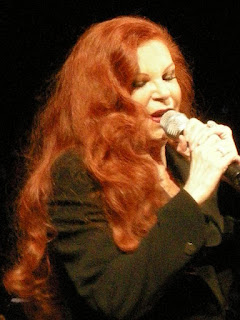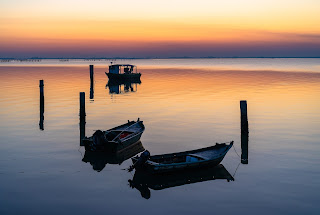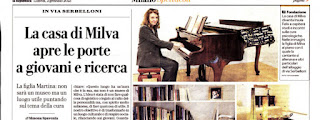Popular star of five decades
The singer and actress known as Milva died on this day in 2021 in Milan at the age of 81.
Milva pictured at the start of her career in
1961, when she made her debut at Sanremo
Born Maria Ilva Biolcati in Goro, a fishing village on the Po delta, her popularity was such that she sold more than 80 million records. Her output was extraordinary, running to 126 singles and a staggering 173 albums in a career spanning more than half a century. No Italian artist has recorded so many albums.
For a time she bestrode the pop world, earning the nickname La Pantera di Goro - The Panther of Goro - as recognition by the Italian media of her status as one of the three best-loved female performers of her generation, alongside Mina - dubbed the Tiger of Cremona - and Iva Zanicchi, who found herself labelled the Eagle of Ligonchio.
Yet Milva was equally at home with musical theatre and opera and earned plaudits early in career when she sang Édith Piaf's repertoire at the prestigious Olympia theatre in Paris. She was said to have an uncanny ability to sing almost any kind of music in any language after listening to it just once.
Her versatility enabled her to adapt to new trends in music and prolong her career. She had turned 70 by the time she announced her retirement from performing in 2010, although there was still time for one more album and a single, sung in German, in 2012.
The daughter of a dressmaker and a fisherman, as a child Milva had to work to support her family during tough times economically for Italy in the years after World War Two.
.jpg) |
| Milva in the 1980s, when she began a collaboration with Greek composer, Vangelis |
After recording her first single in 1960 with an Édith Piaf's song Milord, she made her live debut at the Sanremo Music Festival in 1961, finishing third. Over her career, Milva would enter Sanremo 15 times, a record for the number of appearances that she holds jointly with Peppino Di Capri, Toto Cutugno, Al Bano and Anna Oxa, although she never won, finishing second twice and third three times.
She demonstrated her versatility the following year with her performance of the Piaf repertoire in Paris, amazing both the audience and critics in the way she could sing in French with the emotion that Piaf brought to her work.
Nicknamed La Rossa because of her voluminous red hair, Milva’s ‘60s output included popular songs but also an eclectic mix of other material, including collections of Italian songs of the 1920s and ‘30s, revolutionary anthems and tango classics. She also appeared in a number of films and starred in Giorgio Strehler's stage production of Brecht's The Threepenny Opera.
In the ‘70s, when she was similarly prolific, she released albums in German and Japanese as well as Italian, and toured Italy, the USA, Greece, France, Germany, Canada, Russia and Japan. The ‘80s saw her begin a long-running collaboration with Vangelis, the Greek composer of electronic and progressive music, and devote much energy to fund-raising, either through albums or stage performances.
 |
| Milva during a performance in 2009, captivating audiences at the age of 70 |
Perhaps uniquely, for her contribution to the culture of the three respective countries, she was awarded the highest honours from three governments: the Order of Merit of both the Italian and German republics, and the Knighthood of the French Légion d'Honneur.
She began to slow down only at the end of the 2000s, when she concluded that she was unable to reach the high standards she had always set for himself.
Married once, from 1961 to 1969, to the film and TV director Maurizio Corgnati, she was said also to have had romantic relationships with the actor Mario Piave, the lyricist Massimo Gallerani, and another actor Luigi Pistilli.
She had a daughter, Martina, with whom she was living at the time of her death, which came after a period of illness attributed to a degenerative neurological disease. After a private funeral, Milva’s body was laid to rest at the cemetery at Blevio, a small lakeside town on Lago di Como where she had a house.
Travel tip:
Milva's home village of Goro sits on the edge of
the beautiful Po Delta regional park
Goro, where Maria Ilva Biocati was born, is a fishing village on the edge of the protected Po Delta regional park, situated on the Emilia-Romagna side of the border with Veneto. The Sacca di Goro, a large lagoon enclosed between the Po di Goro and the Po di Volano rivers, is an ideal habitat for mullet, sea bream, sea bass and for breeding of mussels, oysters and veracious clams, including the rare Golden Oyster of Goro, which is considered a delicacy, The Sagra della Vongola, Goro’s clam festival, takes place during the month of July each year, allowing visitors to enjoy the flavours and traditions of the area.
Travel tip:
A story in La Repubblica newspaper about Casa
Milva's role in the Insula Felix Foundation
Milva’s home in Milan for 40 years was an apartment in an art nouveau palace in Via Serbelloni, an elegant area of the city between Porta Venezia and the Fashion Quarter. Recently, Milva’s daughter, art critic Martina Corgnati, has established the apartment, at No 9 Via Serbelloni, as the headquarters of the Insula Felix Foundation, which was set up by her late mother in 1984 as a non-profit institution as a place of research, the celebration of culture and for the support of young scholars, also promoting innovative forms of support for people with mental illness or neurological-psychiatric problems.
Also on this day:
1554: The death of poet Gaspara Stampa
1857: The birth of opera composer Ruggero Leoncavallo
1939: The birth of Mafia boss Stefano Bontade
1964: The birth of leading conductor Gianandrea Noseda

.jpg)



.jpg)
.jpg)








.jpeg)


.jpg)




.jpg)

